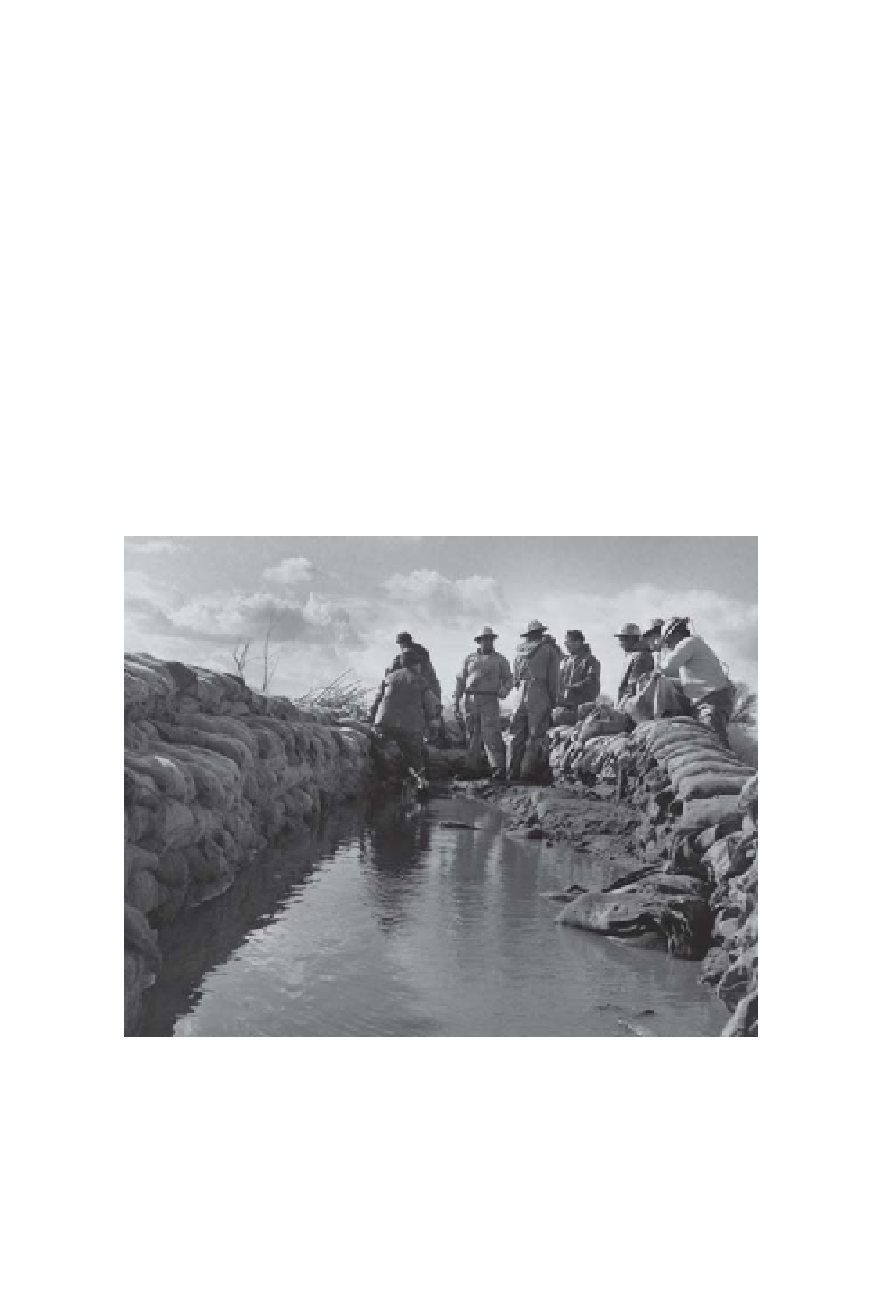Biology Reference
In-Depth Information
ing up these “swamps” for a song and imagining corn, rice, wheat, and
orchards standing in place of the sea of bulrushes. The state had been
granted ownership of two million acres of California wetlands by the fed-
eral government under the Swampland Act of 1850. Eager to raise reve-
nue, California began selling off overflowed lands with incentives to drain
and reclaim.
Californians got so busy building levees for both flood control and rec-
lamation that they invented a special piece of equipment—the long-
boomed clamshell dredge—to get the job done. “The dredges moved along
rivers and tidal channels, scooping up bucketfuls of mud, swinging them
to the island side, and dropping a row of loads,” writes historian John Hart
in
San Francisco Bay, Portrait of an Estuary
. “A dike would be built in two
or more passes, with pauses in-between while the sediments drained and
consolidated. Once the barrier was complete, remaining water within the
walls would be pumped out, and farming could begin.”
Central Valley settlers began building levees and dams in the 1800s to protect
their homes and fields from floods. (U.S. Army Corps of Engineers Transcripts Col-
lection, Courtesy of the Department of Water Resources)
Entrepreneurs organized holding and construction operations to re-
claim delta marshes, leading to the farming of hundreds of thousands of
acres. A few of these small reclamation districts—usually organized and
run by a board of local landowners—formed in the 1860s. The first large-
scale district, RD 108 in the Colusa Basin, came into existence in 1870 and

